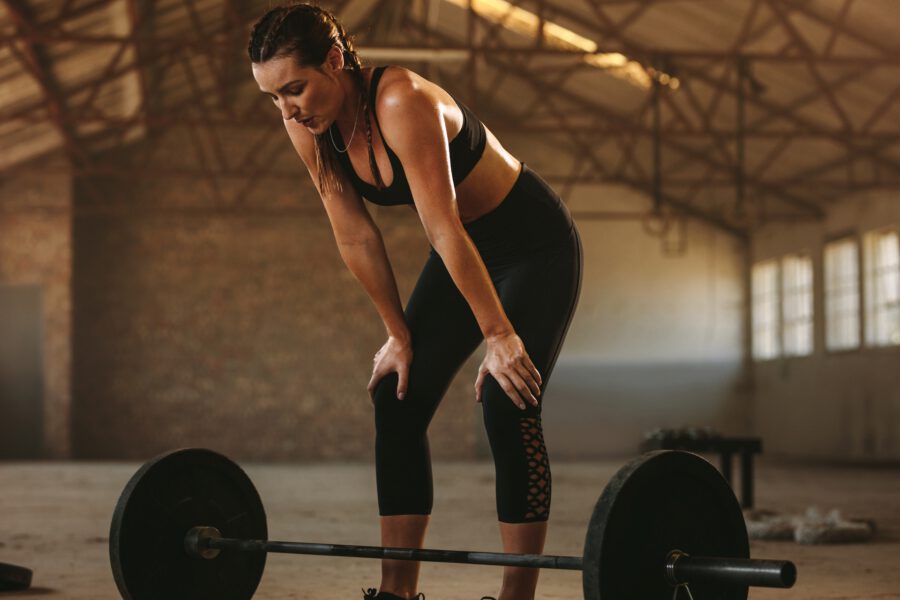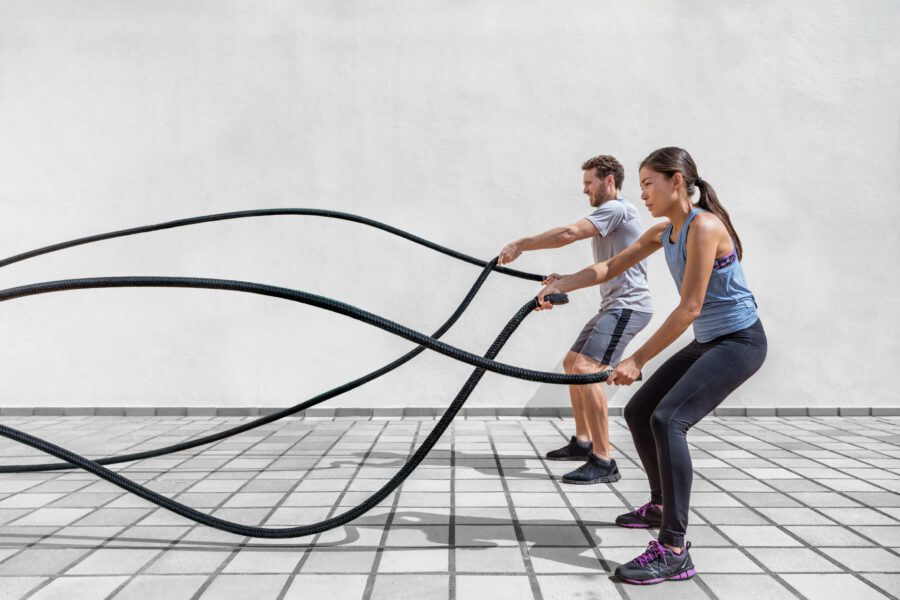The Benefits of Doing HIIT Workouts for Muscle Growth
High Intensity Interval Training has become a popular form of cardio to burn calories, boost cardio fitness, and torch body fat. What many people don’t realize is that it can also build muscle, tone, and help retain lean muscle mass.
In this article, we examine just how HIIT promotes muscle growth. We’ll also present two of the most effective HIIT workouts for muscle growth.
In order to make your muscles bigger, you need to subject them to three stimuli:
- Mechanical tension
- Muscle fatigue
- Muscle damage
When you lift a heavy weight, contractile proteins in muscles generate force and apply tension to overturn the resistance. The mechanical tension is the main driver of hypertrophy. This tension can result in structural damage to the muscles.
Mechanical damage to muscle proteins stimulate a repair response in the body.The damaged fibers in muscle proteins result in an increase in muscle size. Mechanical fatigue happens when the muscle fibers use up all the ATP that is present. This is the energy molecule that the body uses to power your muscles. They are either unable to sustain muscular contractions any longer or are unable to correctly lift the weight.
Skeletal muscle protein cycles through periods of synthesis and breakdown on a daily basis. Muscle growth occurs whenever the rate of muscle protein synthesis is greater than the rate of muscle protein breakdown, muscle hypertrophy is thought to be a collection of adaptations to different components - the myofibrils, the sarcoplasmic fluid, and the connective tissue.
Lifting heavy weights is the best way to create mechanical tension. But it is not the only way. A modified form of HIIT training may be as effective as straight weight training at promoting the other two ways that muscles grow.
Before we detail the exact HIIT methodology for muscle growth, let's consider those two other ways that muscles get bigger
A rise in the volume of the sarcoplasmic fluid within the muscle enlarges the muscle.
The connective tissue of the muscle is the extracellular matrix of the cells within your muscle fiber. This is a three-dimensional scaffolding of connective tissue. Increases in its mineral and protein content lead to muscles getting bigger.
Here’s a plan you should try:
To build muscle, you must work out hard enough to put your muscles under enough stress for an adaptive reaction to take place. That intensity level is not met by the majority of cardio exercises. However, HIIT exercise does do that.
In an untrained person, performing conventional HIIT workouts will be sufficient to build some muscle mass. For example, doing repeated rounds of 20-second sprints on the track will develop quad strength and size. However, that muscle-building potential is limited. That’s because there is not enough resistance to place ongoing stress on the muscle.
In order to build muscle with HIIT training you need to pair the concept of HIIT with resistance training. The great thing about HIIT is that it is more of a training concept than a set workout routine. It involves doing repeat rounds of short bursts of intense work followed by brief rest periods.
By choosing a form of resistance exercise as the basis of your HIIT training you will be able to get all of the fat-burning and cardio enhancing benefits of HIIT as well as its muscle-building potential.
Not all resistance exercises are suited toward HIIT training. To be effective, it needs to be an exercise you can get into and out of quickly and without interruption.It should also involve a cardiovascular element so that it gets you puffing. Here are some effective exercises to target the main muscles of the body:
- Quads, Glutes, Hamstrings - Kettlebell swings, jumping rope, box jumps, goblet squat, sled push, jump lunges
- Chest, Lats - Renegade rows, power cleans, burpees, push up/squat, rowing
- Deltoids, forearms - Battle Ropes
Here are two of my favorite HIIT workouts that I give to my personal training clients as they train for the ideal balance of mean muscle mass.
A complex is when you do a series of exercises one after the other with no rest between them. You need to group together exercises that you can move between with no down time. Doing this workout with a barbell in front of a power rack will allow you to do that.
You will use the same weight on all six exercises. When selecting the weight, make it appropriate for the ‘weakest’ exercise, which in this case will be the push press.
Once you have completed all six exercises, rest for exactly 120 seconds. Then do it all again. This workout can either be done for rounds or for time. If you're training for rounds, I recommend aiming for eight. However, if you’re training against the clock, set your timer for 30 minutes and get as many rounds in as possible. To do this, you will try to minimize your rest time.
- Barbell Romanian Deadlift
- Barbell Bent Over Row
- Barbell Hang Clean
- Barbell Front Squat
- Barbell Push Press
EMOM is an acronym for every minute on the minute. You’ll have a set number of reps (in this case 15) to do every minute. If it takes you 32 seconds to complete them, you’ve then got the remainder of that minute (28 seconds) to recover. Then, as soon as the next minute begins you’re into the next set of 15 reps.
Select a weight that’s 60% of what you’d normally do for 15 reps. The short rest periods and progressive intensity from minute to minute will make it feel a lot heavier. Using a 60% load will also help to keep your form on point as fatigue sets in.
- Goblet Squats x 15 reps for 15 minutes
HIIT workouts are not as effective at building muscle as straight sets weight training. But, when done in the resistance hybrid fashion that we’ve described, it serves as an awesome complement to your main muscle building workouts.
A resistance HIIT workout will preserve and even build muscle as it helps get you lean. Perform your HIIT resistance workout 2-3 times per week for best results.

